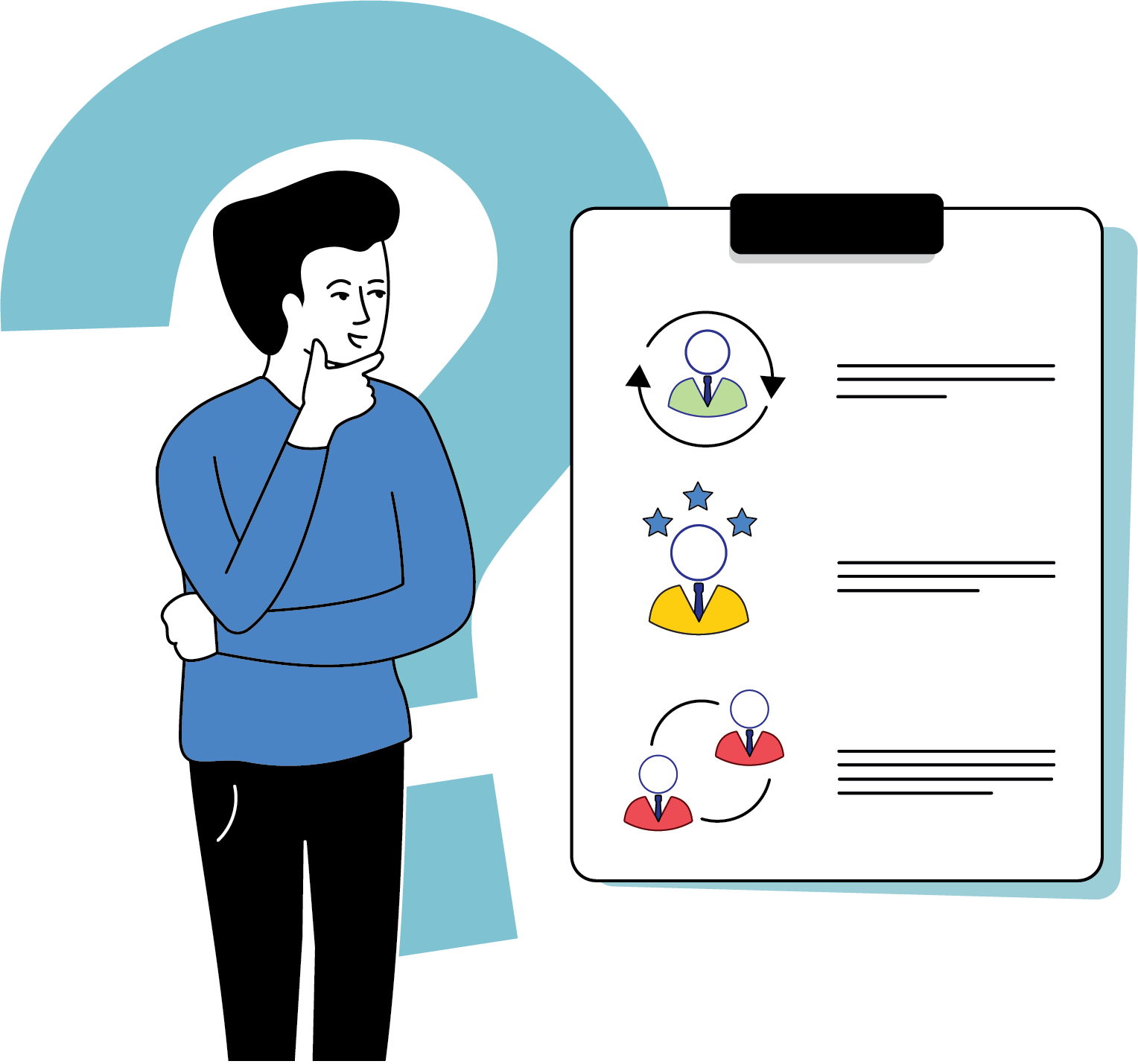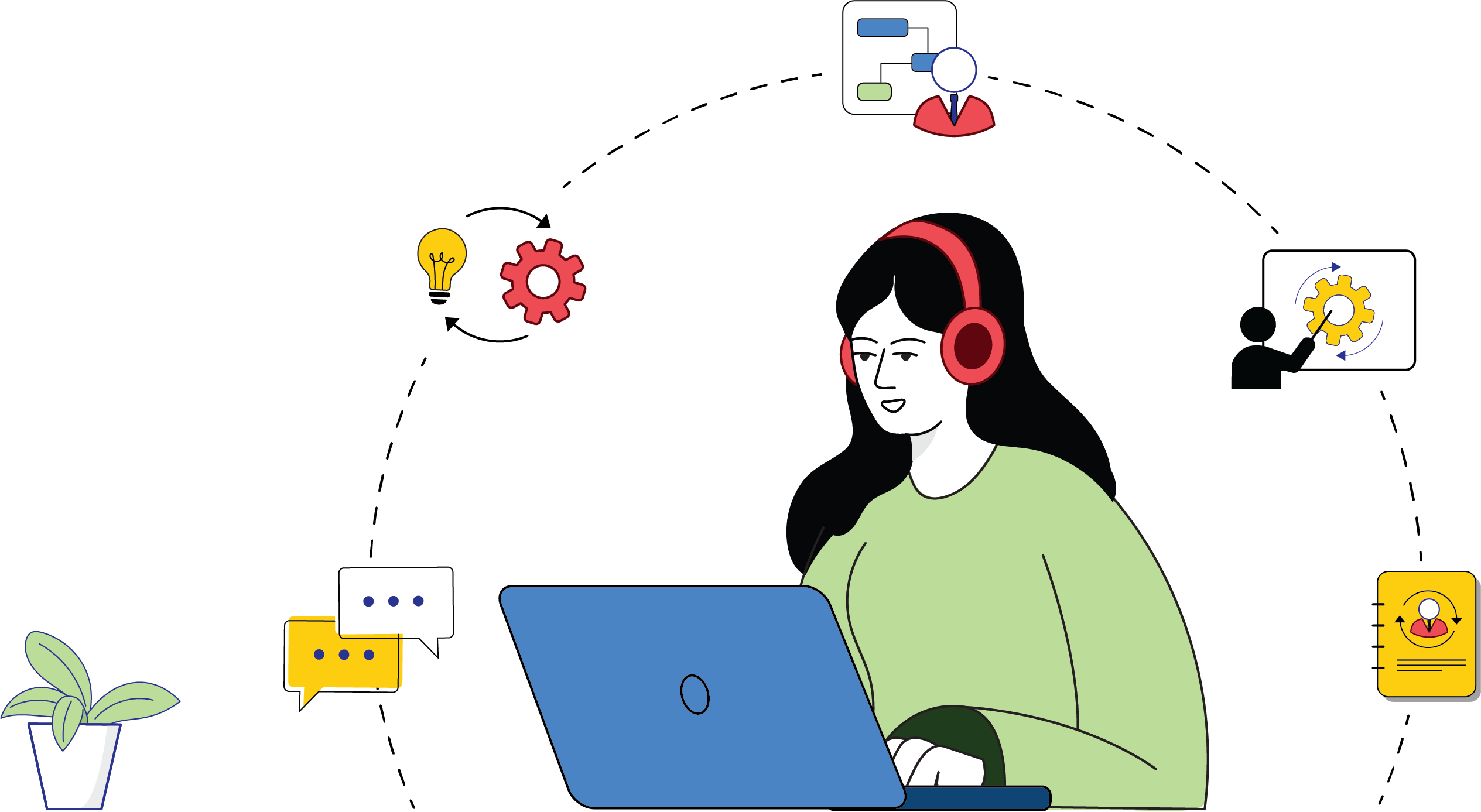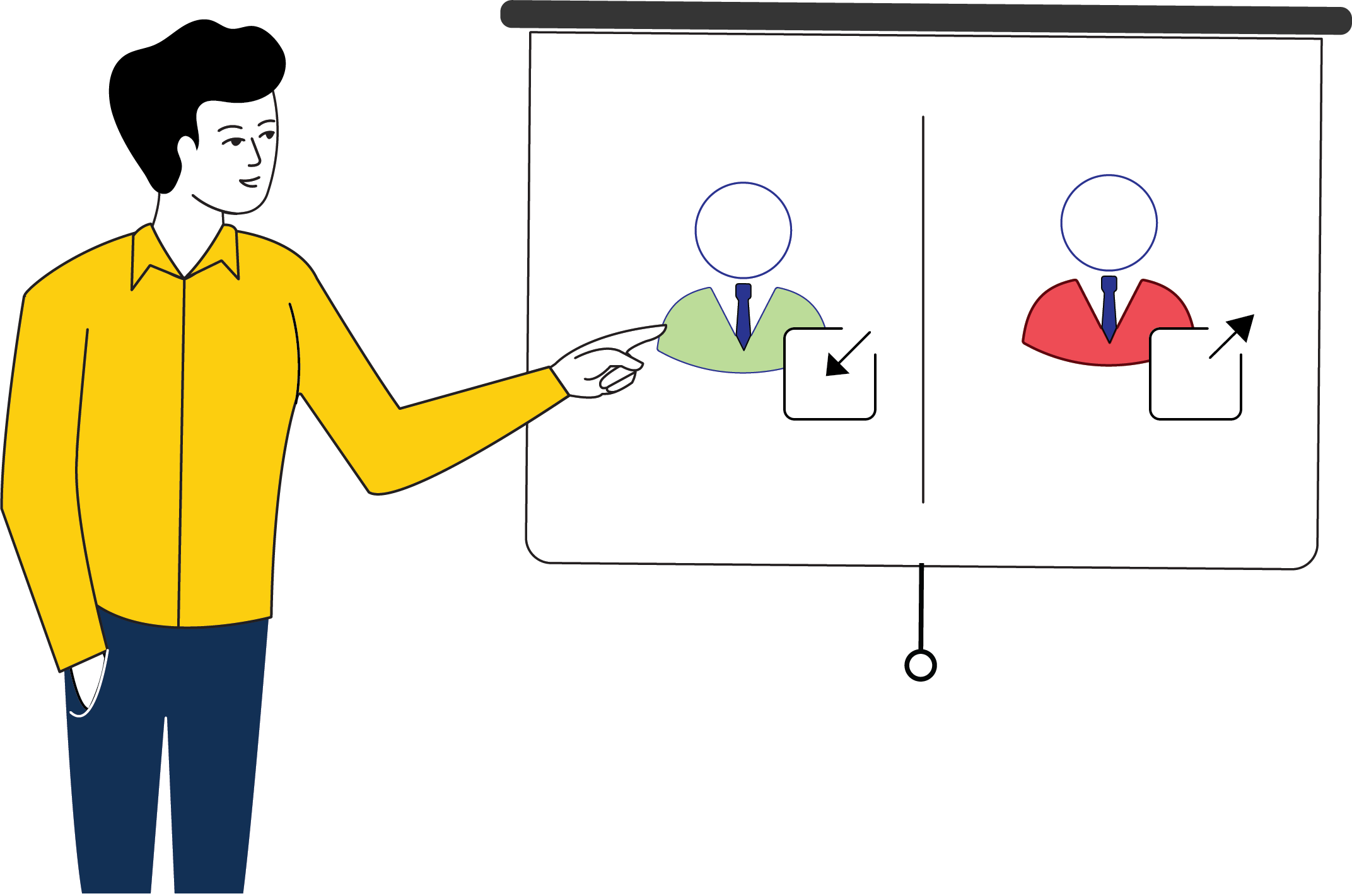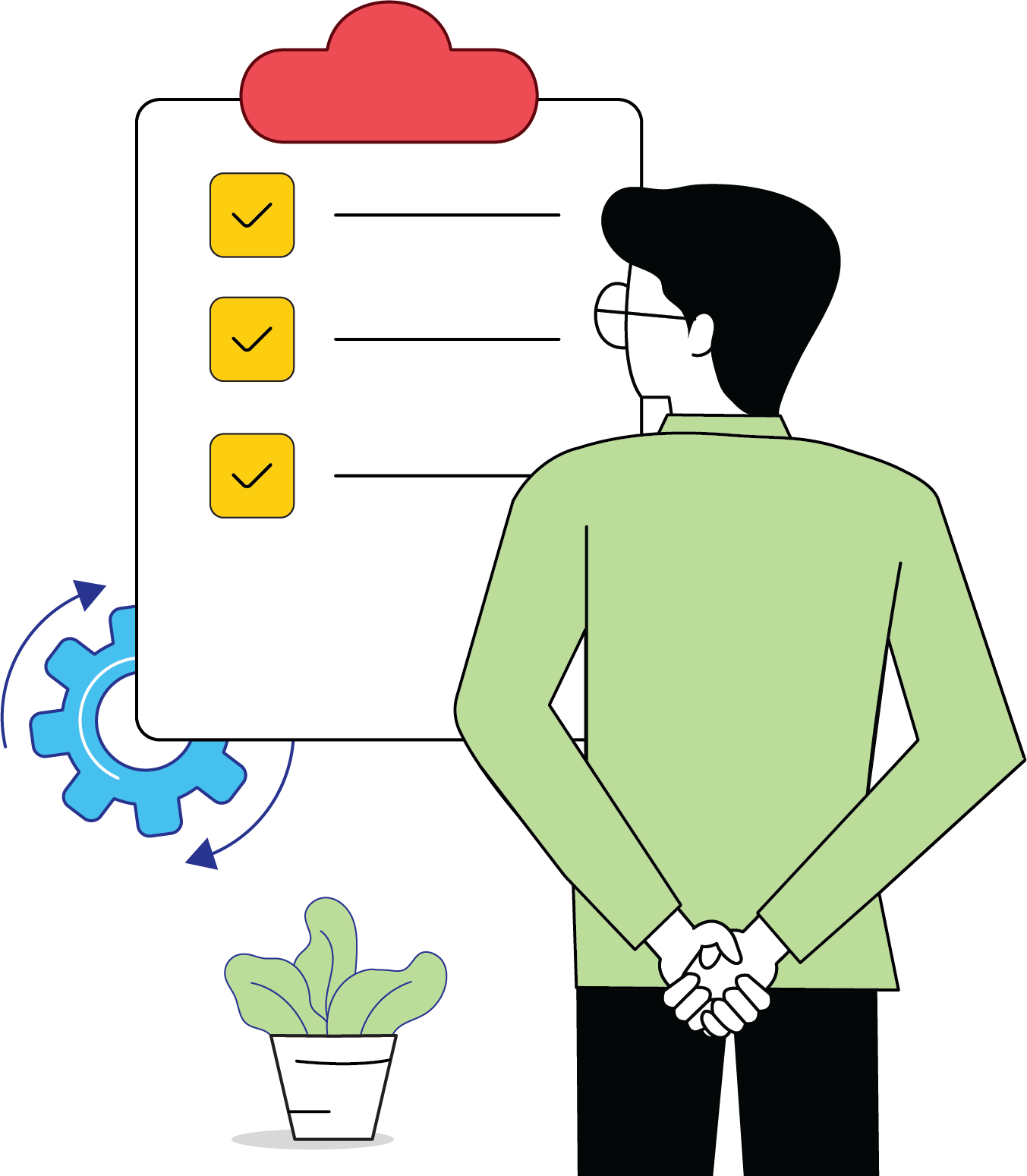IT change management practices play an integral part in the scalability and adaptability of IT change processes and implementation in any organization. It is considered one of the mainstream ITSM processes and is included in most enterprise and IT management frameworks. IT- and business-level changes fall on a broad spectrum of organizational development and can range from a basic-level change such as a printer replacement to adopting new technology for the entire organization, such as moving from a spreadsheet to store IT and non-IT asset data to implementing a comprehensive ITAM solution. In a nutshell, a change can be an innovative approach to existing ITSM management processes or the building of a new IT management framework altogether—there are many scenarios that call for an IT change.
What is a
change agent?

A change agent is an individual or a group of individuals who take initiative and orchestrate changes within an organization. The change agent identifies the need for the change and takes the initial steps for the change process, overseeing it from inception to closure. Change agents can be IT technicians from within the organization or, in many cases, are external IT and ITSM consultants who are brought in to formulate change initiatives. The term change agent also has a few aliases; agent of change and change advocate are also terms used to identify a change agent.
What's the difference between a change agent, a champion, and a change leader?

Although the terms change agent, champion, and change leader are used interchangeably, there's a stark difference in the responsibilities handled by each of these roles. Here's how to differentiate between the roles.
While the change leader bears the necessary skills to lead teams to change success and leads the teams involved in the change, they may not be advocates for the change to happen. The change agent, on the other hand, acts as the catalyst for change and can be considered a level higher than the change leader. In the initial phases of a change, including the change request creation and the change request review, the change agent plays a crucial role in analyzing the risks involved, weighing the pros and cons, and ultimately creating a compelling case for the change to happen. The change leader oversees the orchestration of the change in the planning, implementation, and review stages of a change.
Change champions are those individuals who are motivated for the change to happen and collect resources and commitments for the change but do not bear the necessary sponsorships for the change implementation. Therefore, while it's beneficial to have a few champions on board, they don't have the accountability for the success of the change.
What are the roles and responsibilities of a change agent?

According to Fred C. Lunenburg's paper in the International Journal of Management, Business, and administration, a change agent holds at least three distinctive roles: consultant, trainer, and researcher. For instance, an IT change that involves moving from using a legacy tool to a SaaS application requires the change agent to do the necessary research, analyze it, and ensure that the change is beneficial before starting with the implementation process. They also need to convince the IT team and advocate the need to adopt new technologies to improve their IT service desk operations, thereby taking on the role of consultants. With the approval of the change from the change advisory board (CAB), the change agent oversees the training of technicians who will be enabling the change—this involves moving data from the legacy tool to the new tool, making the required configurations, etc.—as well as the stakeholders who will be using the new tool.
Besides these roles, change agents must also advocate, motivate, enable, mediate, and manage the change. A change agent may hold any position within the organization; regardless of what it is, their role as a change agent assumes the following responsibilities:
- Effectively communicate the need for the change and its benefits to the IT team
- Process ideas and feedback from the CAB and other team members, and incorporate them in the change process
- Lead the change process by designing appropriate frameworks and workflows for the specific IT change while also consulting with the change leader and the CAB
- Train IT technicians performing the change workflow tasks with the necessary skills and motivate them towards efficiency
- Guide and support IT team members throughout the life cycle of the change
- Take ownership in a way that ensures the completion of the change implementation with the expected outcome
- Evaluate and identify potential areas of dispute within the team or the CAB, and formulate strategies proactively to mitigate disruptions
Types of
change agents

A change agent can be someone from within the organization or an external professional hired to play the role. They can be a low-tier technician with the required skill set or the most experienced member of the team. It boils down to appointing the best fit to take on the role of a change agent for the specific change at hand.
1. An internal change agent is generally an IT technician from within the organization playing the role of an IT team manager, an IT team leader, a senior executive technician, or simply a technician from any tier with the required skill set for the specific change. Internal agents have the advantage of firsthand information on the organization's and IT team's set frameworks, processes, history, and familiarity with fellow team members.
2. An external change agent belongs to a third-party organization or is a freelance ITSM consultant hired to take on the specific change implementation. They are independent of the organization's general work culture and policies, and can entirely devote their time and expertise to offer a different perspective on things. They often challenge existing frameworks to bring fresh ideas to the table. However, it's important that they research the functioning of the organization's IT infrastructure and its history to build relevant strategies.
Important characteristics
of a successful
change agent

A successful change is driven by multiple factors, one of the most significant ones being the part played by the change agent. The role of the change agent is therefore critical, and their relationship with stakeholders and how they manage the team depends on their qualities. Here are a few characteristics of a successful change agent:
- Understands the risks involved, and orchestrates the change with the organization's IT infrastructure, the impact of the IT services offered, operating culture, regulations, and risk tolerance in mind
- Makes data-driven decisions while assessing the potential risks of the IT change
- Sees the big picture and simplifies the change process for the IT team and stakeholders
- Is willing to think out of the box and make adjustments to the workflow, CAB, etc. accordingly
- Is enthusiastic and focused on driving the change to success
- Embraces newer technologies and trends, including automation, cloud adoption, and AI-powered workflows
Significant skills required of a
change agent

A certain skill set is required of a change agent like in any other role. The following are some of the key skills that are required for a change agent to successfully drive the change:
- Intellectual and analytical skills to perform research, collect and analyze internal data, conceptualize, be empathetic and guide technicians, and proactively manage the change
- Communication and listening skills to advocate for the change, convince stakeholders and team members of the change workflow, and manage team members amicably to ensure there are no disruptions
- Technical competence to understand the impact of the change on the IT landscape and to minimize the impact of the change on the IT services
How to identify
"the one" while analyzing potential change agents

Certain organizations operate with the seniority approach to appointing change agents. This may not be effective in all scenarios considering the skills required of a change agent. The best way to approach the hiring process would be to frame a checklist bearing the necessary skill sets and desirable qualities expected of the change agent pertaining to the organization's standards and the specific change. The role of senior members or top-tier technicians is to keep an eye out for individuals who possess the necessary skills and qualities to be change agents. Organizations can even keep a record of the mixed skill sets of employees to shortlist candidates easily.
The bottom line is, each organization is unique and so is each change. The workability of a change agent can have a huge impact on the successful implementation of a change, and it is therefore crucial to design an exclusive hiring process and appoint appropriate candidates to take on the role.



